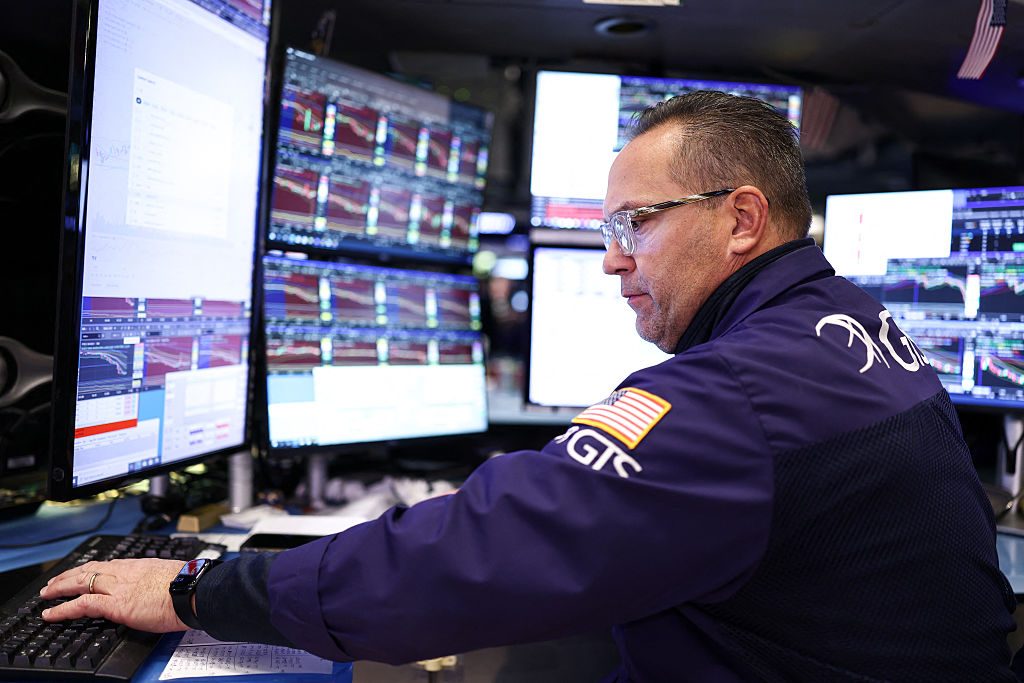This week, journalist Derek Thompson posted two contrasting graphs about the nature of the economy right now. On the one hand, corporate confidence is riding high. An analysis of earnings calls revealed nary a mention of an impending “economic slowdown”. On the other hand, the University of Michigan reports that unemployment expectations are at a 40-year peak.
Other indicators show the same economic split-screen. Tech investment is through the roof. Silicon Valley is minting new billionaires by the dozen. Meanwhile, manufacturing jobs numbers have fallen for the eighth straight month. October layoffs and job cuts hit their highest level in 22 years. In fact, it’s been the worst year for layoffs since 2009, ironically concentrated in the very same tech sectors that have seen profits soar. It seems we’re heading for a crash.
The high-tech and high-finance boom has created an economic paradox: while it’s arguably the only thing keeping the economy afloat, it’s also making the economy so top-heavy that it could capsize. Financiers are pouring billions into AI startups while corporations slash employment roles in anticipation of the supposedly unprecedented labour-saving power that LLMs promised. A lot of this is premature since the tech just isn’t there yet; reports are already surfacing about companies rehiring humans because the quality of work done by AI agents simply isn’t as good.
Nevertheless, the money keeps pouring in. Sam Altman’s OpenAI, for example, has lost over $12 billion in the last quarter; unsurprisingly, he’s already angling for a potential government bailout. Meanwhile, Big Tech’s Big Four — Google, Meta, Microsoft and Amazon — have spent $112 billion on data centre investments in the past three months alone. The scale is so grand that everyone seems to be running out of money to spend, with companies now turning to risky debt-backed financing schemes to fill the gap.
And this brings up the uncomfortable reality of our new Gilded Age. In 2008, when the economy took a nosedive and millions of Americans were unemployed and underwater on their mortgages, the White House signed off on a series of bailouts designed to pull the economy out of the dirt. Those bailouts were rightly criticised for letting bankers off the hook but they had the benefit of relating to things in the real world, namely jobs in the auto industry and family mortgages. Today, things are very different.
In 2025, it is highly unlikely that similar bailouts will work. For one thing, the sheer cost would exacerbate an already heaving federal deficit. As the economic sociologist Wolfgang Streeck has convincingly shown, the current public debt load is just not sustainable — and that’s without authorising trillions more to save too-big-to-fail tech titans. More worryingly, despite record investments no one seems to know how to make money on AI, returns on investment are shockingly low, and industrial applications of the technology are as yet unknown.
Then there’s the question of what exactly the government would be bailing out. It was unfair to give General Motors a fat cheque, with few strings attached, but in some ways it made sense because people actually work in auto factories. What would it mean to give the manufacturers of mass layoff devices the same grace?
Any adequate response to the looming crisis will require a comprehensive reassessment of political economy. This means reviving public works, investing massively in infrastructure, and undertaking ambitious housing projects. If advanced robotics and artificial intelligence are truly transformative, they must be harnessed to tackle the public’s economic challenges. Productivity gains should be shared through shorter working weeks and higher wages, ensuring that technological progress benefits everyone, not just a privileged few. We are losing our grip on the AI revolution — and unless we act, it risks grossly deepening inequality and tanking the economy as a whole.

